
Station Name: COCKERMOUTH FIRST SITE[Source: Alan Young]
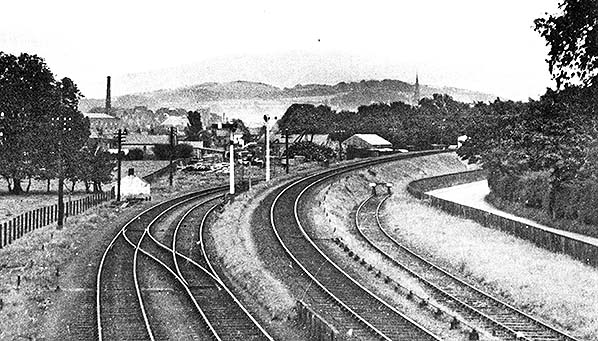 Looking east from Cockermouth Junction c1950s. The Cockermouth & Workington Railway, opened in 1847, is the double-track leading to the original passenger station, which became the town’s goods station from 1865. The CK&P single line climbs on a right hand curve on its way to Cockermouth (2nd) passenger station. To its right is the end of the ‘Stockton siding’ which was used for holding westbound coke trains from Stockton & Darlington Railway (absorbed by the North Eastern Railway even before the CK&P was opened) before they continued to the ironworks of west Cumberland.
Photo by Richard L Pattinson courtesy of Cumbrian Railway Association 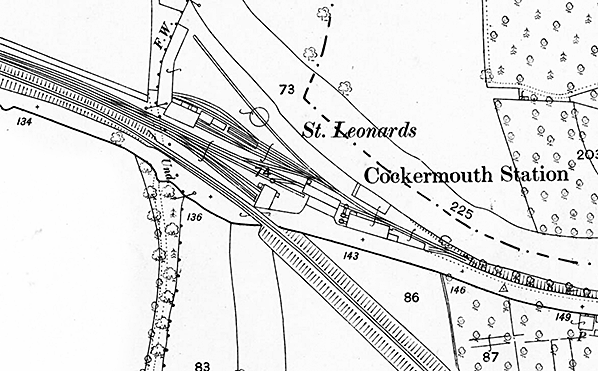
1866 1: 2,500 OS map. This map shows the Cockermouth & Workington Railway (1st) station at the end of its life as a passenger station. The Cockermouth, Keswick & Penrith Railway single track, curving south-eastwards on an embankment towards the new station (which opened in January 1865) has just been added to the map. The buildings (all unshaded) on the 1st station site are (from NW to SE) the engine shed, coal depot, passenger station (beside the small layby on the main road) and the goods warehouse. Note how two railway tracks enter the warehouse, but that these are reached by a single line at right angles to the line through the passenger station; the circles on the right-angle junctions indicate wagon turntables. These enabled goods to be handled in a very restricted space. The locomotive turntable is located on the siding striking north-westwards along the bank of
the River Derwent. 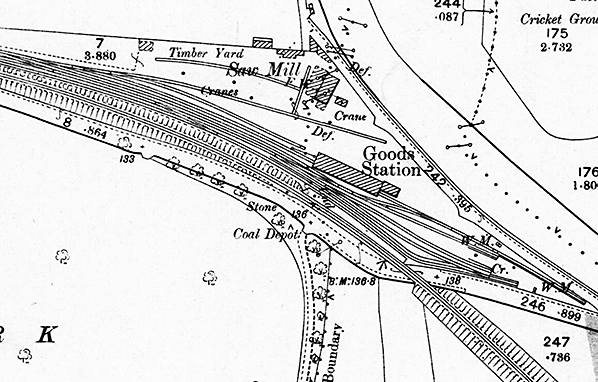
1900 1: 2,500 OS map. In the 1880s the cramped first Cockermouth station site was enlarged and the buildings and sidings layout greatly altered; the new arrangements are depicted here. The building labelled ‘Goods Station’ is the warehouse created by extending the old engine shed. The former passenger building, which served for almost 20 years as the goods warehouse, has been demolished. The northern end of the site now accommodates a timber yard and saw mill with associated sidings and cranes. In the goods yard a coal depot, cranes and weigh offices (‘W.M.’ = weighing machine) are identified.
 The Cockermouth & Workington (CW) Railway’s two-road locomotive shed is seen looking east in September 1966. This was located at the CW passenger station which opened in 1847. The shed was extended by 25ft in 1858 (adding the fourth and fifth arches in the wall). After housing LNW locomotives for some ten years the building was further extended to serve as a new goods shed. The adjacent passenger station closed in 1865 but the site continued to operate as Cockermouth Goods until 1964; the photograph was taken a little over two years after it closed completely.
Photo by Harold D Bowtell 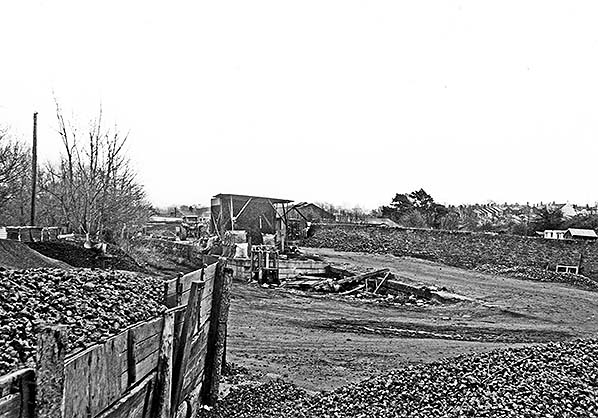
In April 1980 coal continues to be stocked at the site of Cockermouth (1st) / Cockermouth Goods station.
Photo by John Mann 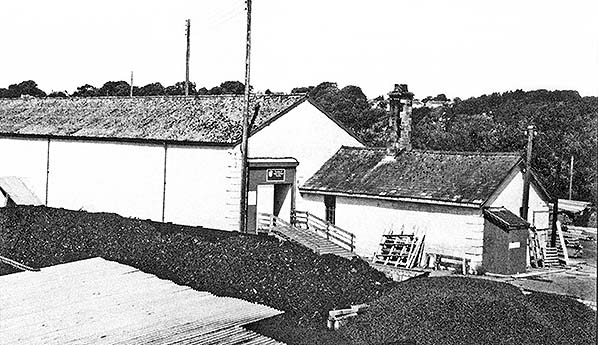
The disused goods shed at the Cockermouth (1st) site, looking north-west in August 1983. One track passed through the goods shed to the eastern end, where a stone-built office wing was provided. The coal cells in the foreground are still in use. The buildings shown on this photograph were to be demolished with site redeveloped as a retail store and car park.
Photo by Harold D Bowtell 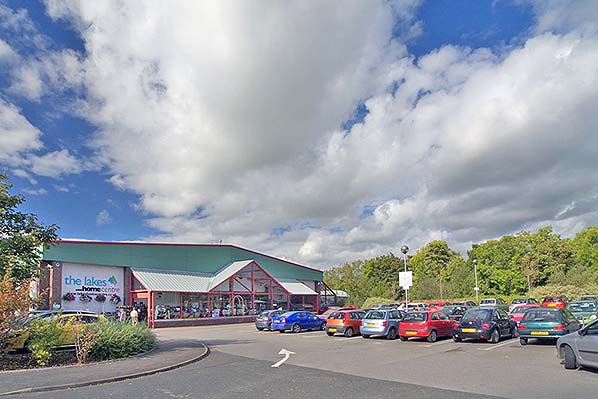
'The Lakes Home Centre’ retail store and car park now occupies the site of the first Cockermouth station. This is a similar viewpoint to the John Mann picture above.
Photo by Nate Francis
|



 Home Page
Home Page